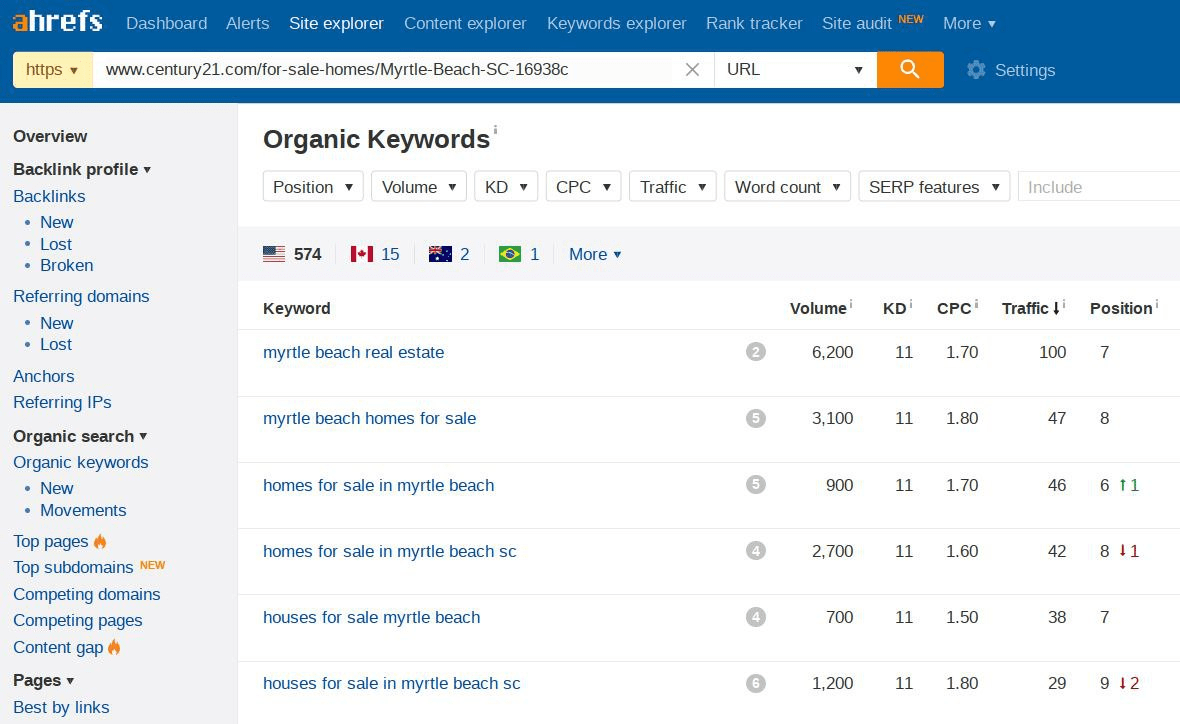SEO Content Writing Techniques changes the game for content creators. Imagine pouring your heart and soul into a blog post, only to see it buried on page ten of search results. You spend hours crafting informative and engaging content, yet it feels like no one is reading it. This is the frustrating reality for many writers who haven't embraced the best SEO content writing techniques.
It equips you with the knowledge and tools to bridge the gap between your writing and your target audience. By understanding how search engines work and what they value, you can fine-tune your content to be discoverable. The result? You'll be attracting readers who are genuinely interested in your message, while simultaneously establishing yourself as an authority in your niche.
What is SEO Writing?
SEO writing is the art of crafting content that not only resonates with your audience but also ranks well in search engine results. It involves thorough keyword research to understand what your audience is searching for and strategically incorporating those keywords into your content. However, it's crucial to maintain the quality and relevance of your content, ensuring that it provides value to readers beyond simply fulfilling SEO requirements.
Why Write SEO-friendly Content?
- Increased Visibility and Traffic: By optimizing your content for relevant keywords, you increase the likelihood of it appearing higher in search engine results pages (SERPs). This heightened visibility means more people are likely to click through to your website, leading to increased traffic.
- Enhanced Brand Authority: Ranking well in search results not only drives traffic but also signals credibility and authority to users. When your content consistently appears among the top results for relevant queries, it establishes your brand as a trusted source of information in your industry, bolstering brand authority.
- Better User Experience: SEO-friendly content isn't just about pleasing search engines; it's also about delivering value to your audience. By creating content that's well-structured, informative, and engaging, you provide a positive user experience that keeps visitors on your site longer. This can lead to higher engagement metrics, such as lower bounce rates and increased time spent on page.
- Long-Term Sustainability: Investing in SEO-friendly content can yield long-term benefits. Unlike paid advertising, which stops generating traffic once the campaign ends, optimized content can continue to attract visitors over time. By consistently producing high-quality, SEO-optimized content, you can establish a sustainable source of organic traffic for your website.
- Competitive Advantage: In today's digital landscape, where competition for online visibility is fierce, SEO-friendly content gives you an edge. By outranking competitors in search results, you capture a larger share of organic traffic and potential customers, helping you stay ahead in your industry.
15 Best SEO Content Writing Techniques
1. Keyword Research

Keyword research is the cornerstone of SEO writing. It's akin to laying the groundwork for your house. Before you start crafting compelling content, you need to understand the search terms your target audience is using. Keyword research tools like Google Keyword Planner, SEMrush can help you identify these keywords. Once you have a list of relevant keywords, you can start incorporating them strategically throughout your content.
2. Keyword Optimization
Imagine weaving keywords into your content like threads in a tapestry. Keyword optimization is the art of integrating your target keywords naturally throughout your writing without sacrificing readability. It's about striking a balance between catering to search engines and engaging your audience. Don't keyword stuff; instead, focus on using your keywords organically within your content's flow.
3. Title Tags and Meta Descriptions

Consider your title tags and meta descriptions as the shop window of your content. These snippets of text are what users see in search results, so they need to be clear, concise, and compelling to entice clicks. Here's how to optimize these elements:
- Title Tags: Keep your title tags between 50-60 characters. Include your target keyword at the beginning of the title for optimal SEO value. Craft a title that accurately reflects your content's topic while being informative and attention-grabbing.
- Meta Descriptions: Meta descriptions should be around 155-160 characters. Include your target keyword naturally within the description. Write a compelling description that summarizes your content and entices users to click-through to learn more.
4. Content Structure
Organize your content in a logical and coherent manner, using headings, subheadings, and bullet points to break up text and make it easier for readers to scan. Additionally, structure your content in a way that satisfies user intent and provides valuable information or solutions to their queries.
5. Internal Linking
Imagine internal linking as a way to create a web of interconnected information on your website. By linking to other relevant pages on your site, you're not only helping users navigate your content but also signaling to search engines the importance of those linked pages. Here's how to leverage internal linking effectively:
- Strategic Linking: Don't just link for the sake of linking. Anchor your links to relevant keywords that naturally fit within the context of your content.
- Link to High-Quality Content: Link to other valuable pages on your website that provide further information or different perspectives on the topic.
- Variety in Anchor Texts: Use a variety of anchor texts for your internal links. Avoid repetitive use of the same exact keyword phrase.
6. External Linking
While internal linking strengthens your website's internal structure, external linking establishes your credibility by demonstrating expertise and providing valuable resources to your readers. Here's how to strategically incorporate external links:
- Link to Trustworthy Sources: Link to reputable websites and high-authority sources to support your claims and enhance the comprehensiveness of your content.
- Contextual Relevancy: Ensure that the external links you include are directly relevant to the topic at hand and offer valuable insights to your readers.
- Open in New Tabs: When linking externally, set the links to open in new tabs to prevent users from navigating away from your website entirely.
7. Image Optimization
Optimize images by providing descriptive filenames and alt text that accurately describe the image content using relevant keywords. Additionally, consider compressing images to reduce file size and improve page load speed, which is a factor in search engine rankings.
8. Content Freshness
Regularly update and refresh your content to ensure it remains accurate, relevant, and up-to-date. This demonstrates to search engines that your website is actively maintained and provides users with the most current information.
9. Mobile-Friendliness
Design your website to be responsive and mobile-friendly, ensuring that it displays properly and functions well on various devices and screen sizes. Mobile-friendly websites are favored by search engines and provide a better user experience for mobile users.
10. Content Length
While there's no strict requirement for content length, aim to provide comprehensive and in-depth coverage of your topic. Longer content often ranks higher in search results, as it tends to provide more value and satisfy user intent. However, prioritize quality and relevance over word count.
11. Social Media Promotion
Another best SEO content writing Technique is hare your content across various social media platforms to increase its visibility, reach, and engagement. Encourage your followers to like, share, and comment on your posts, which can help amplify your content's reach and attract more traffic to your website.
12. Engagement
Actively engage with your audience by responding to comments, questions, and feedback on your content. Foster meaningful conversations and interactions to build a loyal community of followers who regularly engage with and share your content.
13. Analytics and Tracking
SEO is an ongoing process, and tracking your results is essential for measuring progress and refining your strategy. Here's how to leverage analytics and tracking for SEO:
- Traffic Monitoring: Use website analytics tools to monitor your website traffic, track user behavior, and identify which SEO techniques are yielding the best results.
- Keyword Rankings: Track your keyword rankings over time to see how your SEO efforts are impacting your content's visibility in search results.
- Content Performance Analysis: Analyze which content pieces are performing well and which ones might need improvement with trusted analytics software like BigQuery. This data can guide your content creation and optimization strategies.
14. Patience
SEO is a Marathon, Not a Sprint. Achieving significant results through SEO takes time and consistent effort. Don't get discouraged if you don't see immediate results on your website traffic or search rankings. It may take weeks or even months to see improvements in your website's search engine rankings, so remain consistent in your efforts and focus on continuous improvement.
15. Stay Up-to-Date with SEO Trends
Keep abreast of the latest developments, trends, and best practices in SEO to ensure that your content remains optimized for search engines and aligned with evolving user preferences and search algorithms. Stay informed through reputable sources, industry blogs, forums, and professional networks to adapt your SEO strategy accordingly.
SEO content writing is an essential part of any online marketing strategy. By following the best SEO content writing techniques outlined above, you can create content that will help you achieve your business goals. However, it's important to remember that SEO is an ongoing process. Search engine algorithms are constantly evolving, so it's important to stay up-to-date on the latest trends and best practices.
If you're looking for help with creating SEO-friendly content, contact WPFlat. Our team of experienced writers can help you create content that is informative, engaging, and optimized for search engines.



